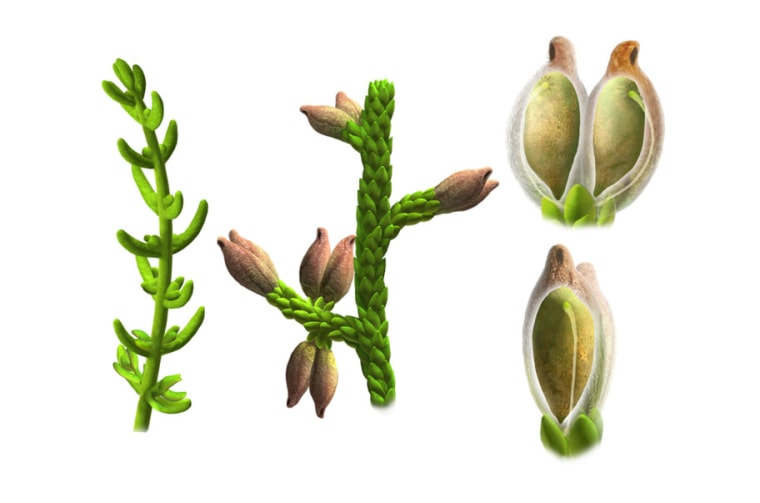A prehistoric aquatic plant may be the oldest flowering planet ever found, reshaping scientists' understanding of what the earliest ancestors of flowers might have looked like. Monsechia vidalii was a leafy freshwater plant that was likely to have been munched on by brachiosaurs and iguanodons more than 125 million years ago.
Close study of extremely well-preserved (and meticulously restored) fossils recovered from an ancient lake bed in Spain show that, contrary to previous categorizations, Monsechia is in fact a flowering plant, or angiosperm. This puts it in the running with the Chinese Archaefructis as the earliest such organism ever identified — the "first flower" as some put it, although the phrase isn't precisely correct.

"A 'first flower' is technically a myth, like the 'first human,'" explained Indiana University's David Dilcher, the archaeobotanist who led the study, in a news release. After all, we can never be sure there was an earlier flower (or human) that evolved first but died out, leaving no trace. But the more we know, the better we can pinpoint how such organisms developed and lived.
Related: 'That's Amazing': Obama Meets Ancient Ancestor 'Lucy' on Ethiopia Trip
"This discovery raises significant questions about the early evolutionary history of flowering plants, as well as the role of these plants in the evolution of other plant and animal life," Dilcher said.
Having identified this early ancestor, Dilcher now aims to discover Monsechia's exact relationship with its modern descendant, a common pond plant called Ceratophyllum or hornwort.
Related: 'Scarface': Dachshund-Sized 'Pre-Mammal' Roamed Earth 255 Million Years Ago
"There's still much to be discovered about how a few early species of seed-bearing plants eventually gave rise to the enormous, and beautiful, variety of flowers that now populate nearly every environment on Earth," Dilcher said.
The details are published in the journal Proceedings of the National Academy of Sciences.

